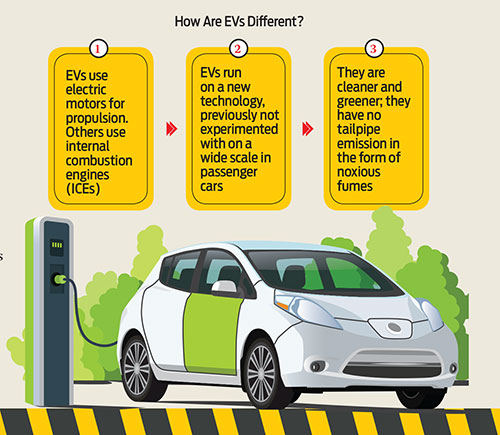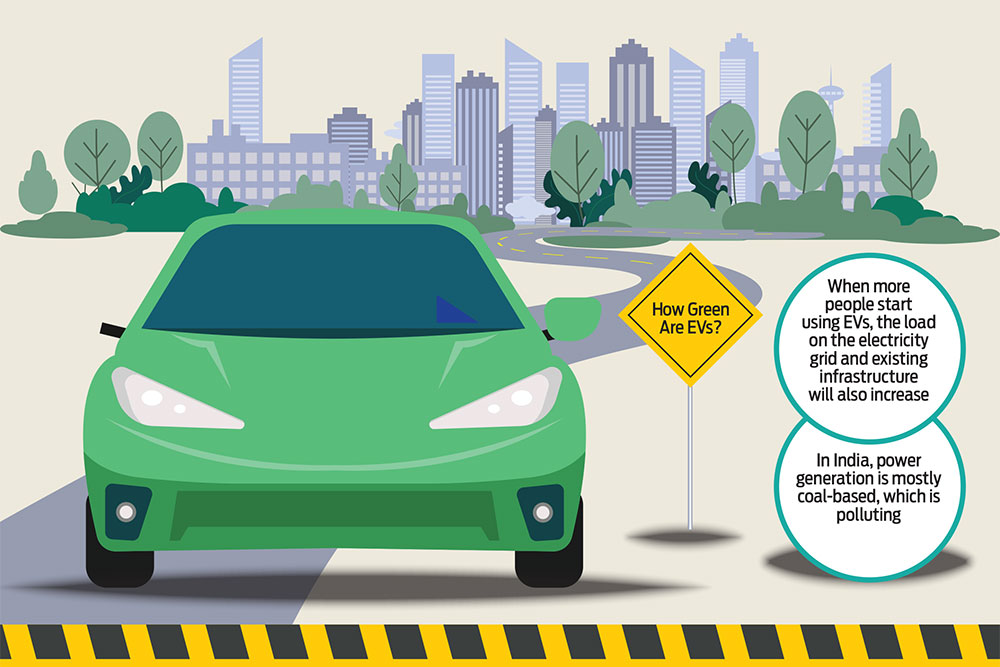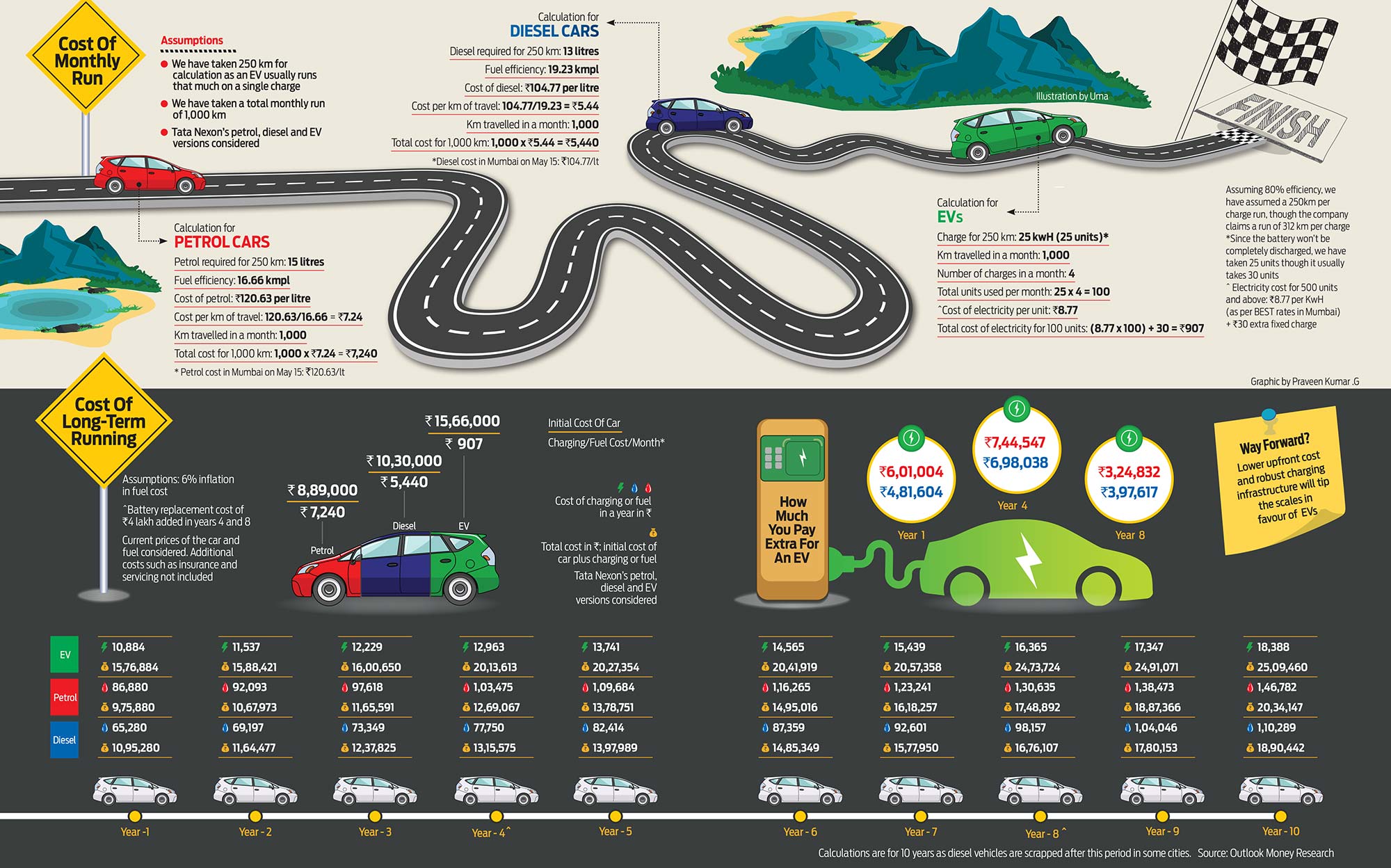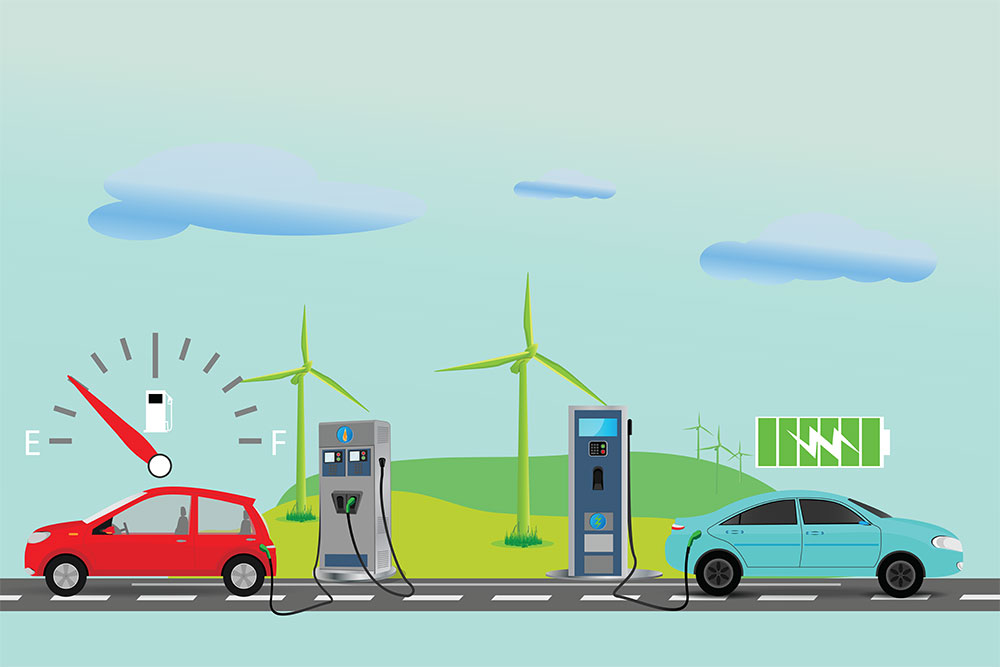For most young people, buying their first car is as emotional a milestone as it was for their parents in the 1960s, 1970s or 1980s when they bought their first scooter or motorcycle. Changed lifestyle preferences and easy access to credit settles the debate of whether to buy a four-wheeler or a two-wheeler for most from the Gen Z and millennial generations, and makes the choice obvious for most. But that’s, of course, only the first step in the choice ladder that leads up to the final decision of buying a car.
One of the most basic choices to make until a few years ago was deciding between petrol and diesel cars. The list now has electric vehicles (EVs) too. Vehicles run on liquefied petroleum gas (LPG) are not very popular because of safety reasons, while compressed natural gas (CNG) is mostly used for public transport or as a second option to petrol or diesel cars.
Though the EV technology has been around for a while, it has gathered momentum only in the last few years, at least in the passenger vehicle segment, thanks to government push and the increased global chatter around clean energy and sustainability.
Realising the gap, the government is also doing its bit. The government had way back in 2015 launched the FAME (Faster Adoption and Strong Manufacturing (Strong) Hybrid and Electric Vehicles) India Scheme as a first step towards promoting eco-friendly vehicles, including EVs. Recently, in Budget 2022, the government gave a further push by giving a go-ahead for expanding the EV infrastructure and proposing the creation of no-go zones for vehicles with internal combustion engines (ICEs) in cities, to ensure a cleaner environment. At the policy level, the government has also come out with a battery swapping policy to allow users to exchange their discharged batteries for a charged one.

Add to that, the rising cost of fuel and the realisation that alternative technology for mobility is the way forward, has upped the stakes for EVs.
Currently, though, the share of EVs remains small. EV four-wheeler sales were up from 3,400 units in financial year 2019-20 to 4,588 units in FY21, according to data from the Society of the Manufacturers of Electric Vehicles (SMEV). This is still minuscule compared to the overall sale of passenger cars in India, which was above 2 million in both FY20 and FY21, according to data from the Society of India Automobile Manufacturers (SIAM).
Among the biggest deterrents for buyers are the high initial cost and lack of infrastructure. Similar models in the petrol and diesel versions are cheaper than the EV version. For instance, the base models of Tata Nexon’s petrol, diesel and EV versions cost Rs 8.89 lakh, Rs 10.30 lakh, and Rs 15.66 lakh, respectively, on road, Mumbai.
However, the argument is that the monthly running cost in EVs is much lower and over a period of time, the cost may get balanced. Does that really happen? We did a detailed calculation to assess if EVs can be more cost-effective in the long run than petrol or diesel cars.
Cost Clincher
The initial cost has put brakes on the uptake of EVs, historically, especially because at the same price point, it is possible to buy a car run on other fuels that has more bells and whistles.

A case in point is the Reva, manufactured by India’s largest sports utility vehicle (SUV) and tractor maker Mahindra & Mahindra. Way back in 2010, M&M bought a majority stake in Reva, arguably the first electric car in India, but that didn’t change the fortune of the compact car in terms of sales volumes. M&M came out with a newer and upgraded version, e20, but the market response was as tepid as before. Style and size-wise, if Reva could be likened to a child’s school boots, the e20 was probably the shoebox.
Given the price at which it was launched, about Rs 6.5 lakh, it hardly had any takers. Considering that people often buy cars to take families out, spending that much on a three-door mini hatchback (two on the sides and one at the back) hardly made any sense. Technically, the Reva could carry two adults in the front and a child in the back.
Almost a decade later, the few carmakers that have made their presence felt in the EV segment, have priced their EV offerings significantly higher than their petrol and diesel cousins. Spending more money to drive around in a less expensive-looking model may not be to everybody’s liking. Experts though expect the prices to come down in the coming years.
Suraj Ghosh, director of mobility, S&P Global, is optimistic that prices will drop in the coming years “as battery prices get cheaper in the longer term, and the entry-level segments start seeing penetration of EVs”.

The upfront cost is, in fact, what tips the scales against EVs at present in terms of the overall cost. Our calculation, for a 1,000 km ride a month, shows that EVs lose out to both petrol and diesel not just after the first year but even after 10 years, on overall cost (see Cost of Running Over The Long Term). The overall cost includes the upfront cost, the charging/fuel cost as well as the battery replacement cost in case of EVs.
“The battery life and the replacement cycle are the ones that will be the points of concern and consideration,” says Ghosh.
While companies claim that the battery lasts for eight years, for all practical purposes, the battery lasts only three-four years. “If we take Tesla as the benchmark, the life could be 6-7 years, but it is safe to assume that on an average, the batteries will last for around four years,” says an official working with a battery manufacturer, on the condition of anonymity.
Where EVs score is on the running cost per month, which is significantly cheaper than it is for petrol and diesel cars, and by a huge margin.
We did not consider additional subsidies and tax incentives in our calculation to ensure ease of understanding and comparison. These may make a slight difference in the figures. The government provides a tax benefit of Rs 1.5 lakh under Section 80 EEB of the Income-tax Act, 1961 on the interest amount on loan for an EV. “An EV might have a higher upfront cost, but the running cost is way lower. Additionally, several government subsidies and incentives help reduce the upfront cost,” says Ghosh.
The EV prices may vary from state to state, depending on state-level EV policies. Charging rates may also vary depending on the type of charger (fast or slow) used.
Advantage EVs
The monthly running cost is definitely lower for EVs, and while this may not necessarily work for individual cars, it can benefit commercial vehicles in terms of total cost of ownership (TCO) as they travel longer distances. “The higher initial cost is more than compensated by significant savings in energy cost. This is the reason that commercial EV cars, which run much more on a daily/weekly/monthly basis than personal cars, have already achieved positive total cost of ownership,” says Rajiv K. Vij, CEO and founder of Plug Mobility, an EV initiative launched by Carzonrent, which provides services in 79 cities across India.
Their biggest USP is, of course, the fact that they are cleaner and greener, as EVs have no tailpipe emission in the form of noxious fumes.
EVs are less noisy too, have a constant torque and power delivery, right from the start, which provides faster pick-up in city traffic, as against ICE cars, which have a specific engine range.
Most importantly, they have lower maintenance cost, and that’s because of their inherent design; they have fewer moving parts. However, we haven’t considered the maintenance cost in our calculation as that will come to a difference of only a few thousands, when, considering other factors, the difference is of a few lakhs.
EVs use electric motors for propulsion, while all other cars use ICEs where a mix of the fuel and air under a controlled explosion in the engine chamber generates energy that is transferred to the wheels through a series of gears and axles.
“A major advantage of EVs over conventional vehicles is that it has fewer moving parts, hence, the risk of worn-out parts is lower, and so are the replacement costs,” says Ghosh.
Where EVs Face The Heat
Less Choice: One of the major reasons hampering the popularity of EVs is their non-availability in the lower price segments. The technology is new and costly, and in limited use. So, economies of scale don’t work here. Consequently, several carmakers in the Rs 3-6 lakh bracket in the A and B segments hardly have any offerings to make. “The A and B segments in India are highly price sensitive, and the upfront cost is a significant barrier,” says Ghosh.

For the uninitiated, the A segment includes the mini hatchback, and the B segment includes the small hatchback. Examples would be Renault Kwid and Datsun Go (both A segment) and Maruti Suzuki Swift and Volkswagen Polo (B segment).
These segments occupy the largest sale numbers and/or market share. “Non-availability of EVs for these customers is a significant factor impacting the market share for EVs as of now,” says Vij, who is, however, optimistic that this gap will soon be filled.
Charging Conundrum: An important aspect is how fast and easily you can charge your vehicle. On an average, EVs take about eight hours to charge; some models have a fast-charging option though.
The availability or lack of charging points is another concern. Say, your EV runs 250 km on a single charge, and you decide to take it out on a drive to the white sands of Divegarh Beach, 189 km from Mumbai. Assuming that you are unlikely to find a charging point anywhere in between, you might have to tow back the vehicle for 128 km during the return trip.
If you do find a charging station, you might have to camp there with your tent, campcot and sleeping bag while your car replenishes its battery.
“The fuel pump network that we currently see in India, has taken 50-60 years to come up, and the network for CNG is still inadequate, but the pace at which EV charging infrastructure driven by private Indian and global players, is coming up, it will ensure that in the next couple of years, we will have more than adequate charging infrastructure in cities/towns and highways to meet all kinds of use cases for the EV fleet,” says Vij. Innovations will address other issues such as speed of charging, he adds.
Safety Factor: While this may not hold true for cars, given the stringent safety regulations in place, the few instances of electric scooters bursting into flames has added to buyer anxiety.
According to Ghosh, the benefits of the FAME scheme created a big demand for electric two-wheelers. New companies forayed into the space and there were compromises on quality with no R&D or product development experience, which led to some of these incidents, he adds. “But the demand drivers and enablers for EV cars are not the same, nor are the government benefits in terms of subsidies. The entry barriers are also comparatively steep for new players to get into making electric cars, so the same challenges may not occur in this segment. The fire incidents did plant an element of doubt in buyers’ minds, but the damage will not be permanent,” says Ghosh.
Outlook Money Take
If you plan to use your car sparingly, for say 1,000-2,000 km in a month, you would be better off with a petrol or a diesel car. On the other hand, if you are planning to run your car only in the city, say, around 3,000 km or more (either privately or commercially); are conscious of the environment; and do not mind spending an additional Rs 6-7 lakh as upfront cost, an EV could be your go-to option. But do keep in mind the limitations. Typically, EVs are used for shorter runs because of charging issues and limited infrastructure.
The overall cost may be high for EVs as of now, but technological improvement and economies of scale are likely to make EVs cheaper in the future. In addition to that, a larger infrastructure roadmap, which will come up as demand increases, may remove the present challenges.
As of now, spending an extra Rs 6-7 lakh on a car with a new technology that doesn’t quite give you the freedom to move around because of lack of adequate charging points, may not be such a good option after all, financially, that is!
s.sanyal@outlookindia.com







